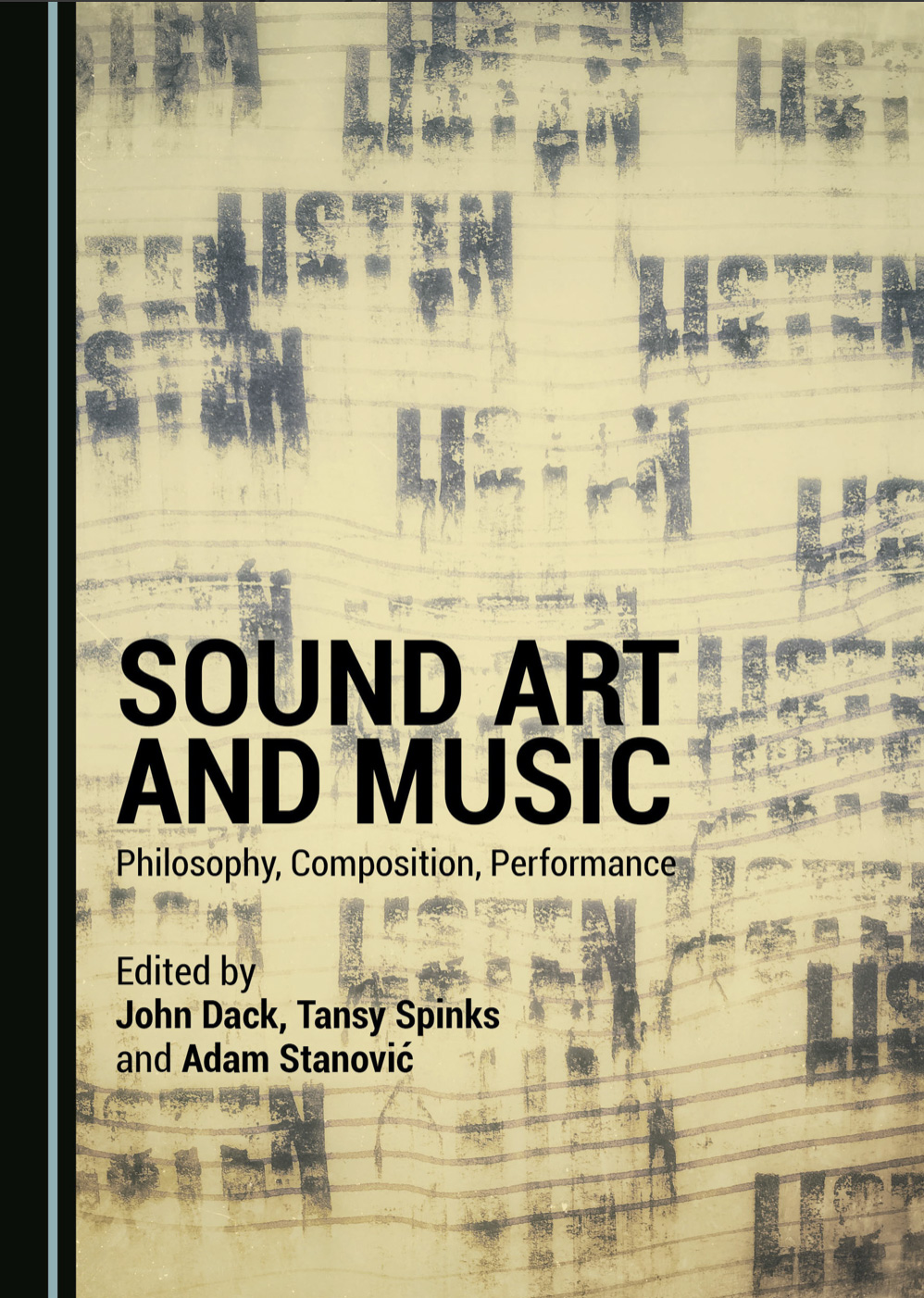Sound Art and Music Philosophy, Composition, Performance John Dack, Tansy Spinks, Adam Stanovic
Excerpt

Chapter One
Introducing a Compositional Model for Live, Site-specific, Sound Art Performance
Tansy Spinks
Take a space, make a sound in it…Cornelius Cardew
In this chapter I shall introduce a new way of approaching site specific sound art practices, by offering practitioners a strategic model to approach and expand the parameters of the compositional process. In introducing this concept, I will allude to a number of my own sound works, undertaken over the six-year period 2008 to 2014, that have been informed by my accumulated experiences as a practitioner of site-specific, sound-making in live performance.
The practitioner, in the sense of this essay, is taken to be a multi-disciplinary artist, a sound artist, a composer, an improvising musician or simply someone who experiments with the possibilities of live, performed sound in an art context. The site, can be considered as a place, a building, a social space perhaps, in which to encounter sounds heard, almost in passing: an abandoned or derelict space, an outdoors space, a liminal (un-prescribed), or ‘guerrilla’ space, (used without permission), an unorthodox place, in other words, to find art or performance.
The site itself might be ‘found’, presented or offered; as an inspiration, by invitation or by commission for an event. It may be deliberately selected by the practitioner, as a site to explore, to respond to and in which to provide sounds to be experienced by others. However, it is not a ‘white cube’ gallery space, a ‘black box’ rehearsal space or a ‘shoe box’ concert hall, with all the expectations that each venue might engender. This chosen site is another place altogether, encompassing aspects of social use, histories and narratives whose connotations are intangible and ephemeral.
How can this challenge be usefully approached? What are the essential elements to consider and how can a methodology of interrogation be best established to develop and steer the sound-making practices?
Arrived at through my own experiences, I now introduce a new tripartite model, to be employed as an aid or driver of this compositional process. This model identifies and clarifies the site-specific elements and opportunities within the given space, to enable a means of distinguishing between the distinct sonic and potential sonic properties of any site, and to establish the active role of the performer(s).
The model identifies three specific terms of engagement (referred to in this document as the three ‘A’s), and asks what we should work at in identifying the actual, the activated and the associative sounds of the site. I will expand on this in due course.
In addressing the proposed project, the practitioner will arrange an initial site visit, where possible. This not only gives a physical impression in identifying a certain spirit of place, but provides an opportunity to listen, make sound recordings, test the acoustic properties, walk around, photograph, sketch, list the sounds heard and talk to any of those people involved with the place; as custodians, workers or temporary occupants. It gives an opportunity to consider what happens in the space now and what has occurred in the past. The building or host site then becomes the locus and the source of the enquiry. By taking stock of the sonic properties and the materiality of these surroundings, possibilities for devising a performance begin to be formulated.
Time will be spent walking around the place and its environs. Aspects of the emerging discoveries may now require, beyond the inevitable google search, a visit to a local museum or a specific library. Materials forming the fabric of the site or objects from the site, may be identified as sound producers or as having sonic potential. Speculative emails will be sent out - following a hunch - wanting to know more from a conservation group perhaps, or a local historian, an amateur enthusiast or an expert in the field. Conversations may evolve – taking trains of thought into hitherto unexpected regions: with a librarian, sociologist, historian, geographer and perhaps with the work of other artists or composers. Contextual references are raided. Have any other artist-musicians produced something like this before? If so, how, and can this be built on?